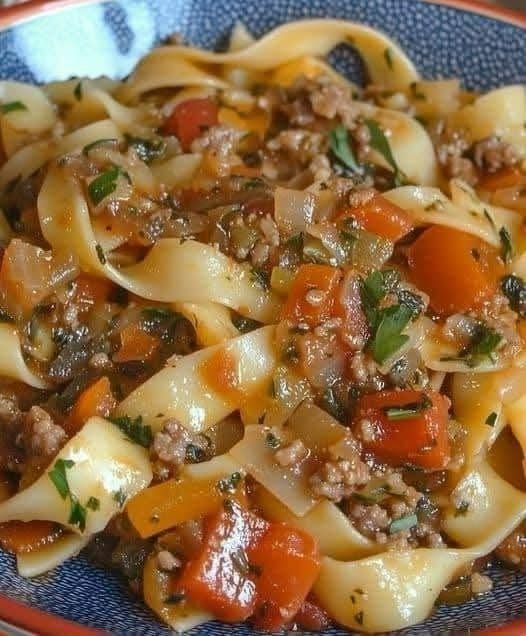Step 5: The Italian Finish (“Mantecatura”)
Remove the skillet from the heat. Stir in the fresh basil and a handful of grated Parmesan cheese. This final off-heat addition of fat and herb brightens the entire dish.
Step 6: Serve Immediately
Divide the pasta among warm bowls. Garnish with more fresh basil and a generous snowfall of freshly grated Parmesan cheese. Serve immediately.
Chef’s Notes: Pro-Tips for an Authentic Taste
Salt Your Pasta Water: It should “taste like the sea.” This is your only chance to season the pasta itself from the inside out.
Never Rinse Your Pasta: Rinsing washes away the essential starch that helps the sauce adhere. Just drain it and add it straight to the sauce.
The Fresh Herb Rule: Dried herbs go in the sauce to cook and meld. Fresh herbs (like basil) are added at the very end to provide a burst of bright flavor.
Quality of Oil: Use a good-quality extra virgin olive oil for finishing. Its flavor is delicate and will be lost if cooked over too high heat.
Frequently Asked Questions (FAQ)
Q: Can I make this sauce ahead of time?
A: Absolutely! In fact, the sauce often tastes even better the next day. Let it cool and store it in an airtight container in the fridge for up to 4 days, or freeze it for 3 months. Reheat and toss with freshly cooked pasta.
Q: How can I make this vegetarian?
A: Simply omit the meat. For a heartier texture, add sautéed mushrooms or zucchini when you cook the onions, or stir in a can of drained cannellini beans with the tomatoes.
Q: What’s the best pasta to use?
A: Long, sturdy pasta like spaghetti, linguine, or bucatini are classic choices. Their shape is perfect for holding onto the rich sauce.
Q: My sauce is too acidic. How can I fix it?
A: A pinch of sugar is a traditional trick to balance the acidity of tomatoes. Add ½ teaspoon at a time until the flavor rounds out.
